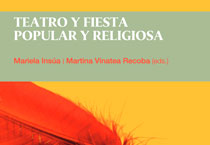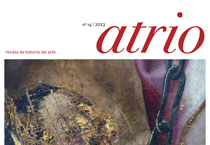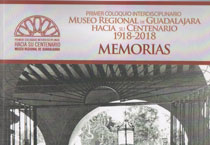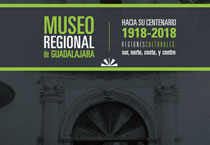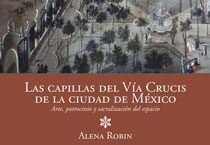Alena Robin
Alena Robin, Department Chair, Associate Professor (Art History)
Postdoctoral Fellow, Université de Montréal, 2009
Ph.D., Universidad Nacional Autónoma de México (UNAM), 2007
M.A., Universidad Nacional Autónoma de México (UNAM), 2002
B.A., McGill University, 1997
Research
Research Interests
My research focuses on religious art in New Spain (Colonial Mexico). Many of my publications and my current research are related to the artistic representation of the Passion of Christ in Colonial Mexico, through different case studies. I have developed knowledge regarding the circulation and appropriation of European prints that have been used by Colonial painters for inspiration. Likewise, I have investigated the reception of specific images of Christ, in print, painting and sculpture, which offered a representation of suffering that I explain through different first-hand historical documents.
My most significant contributions are in relation to the devotion of the Way of the Cross, both in sculpture, painting and in architecture, through a combined approach of patronage and iconography. My book addresses the devotion and patronage of the Way of the Cross in New Spain, more specifically the chapels that were built in Mexico City at the end of the seventeenth century. The book made a valuable contribution to Colonial art and architecture history by recreating, with visual and documentary evidence, buildings that were destroyed in the nineteenth century.
Current Projects
My current book project explores the life and work of the eighteenth-century artist Antonio Enríquez, an almost forgotten painter of the Mexican Colonial school of painting working mainly in Guadalajara, through dedicated archival research and meticulous analysis of his paintings. The project started with an intriguing cycle of paintings illustrating the Way of the Cross, but it resulted in a wider knowledge of the cultural and intellectual environment of Guadalajara in mid eighteenth century. As I was looking for information on Antonio Enríquez, I also paid attention to another painter sharing the last name, Nicolás Enríquez.
My research focus has recently moved to the presence of art from Latin America in Canada, and the Latino diaspora in the country. My article entitled “Mapping the Presence of Latin American Art in Canadian Museums and Universities,” gave me the opportunity to address my field, art from Latin America, but from a Canadian perspective, therefore allowing me to go beyond the area I usually research. This article is the ground for an ongoing research project. It examines the presence of art from Latin America in Canada, from the perspective of the history of collections and exhibitions. It also addresses the institutions that support the field in Canada, and issues of immigration from Latin America to Canada. Furthermore, it considers art from Latin America in Canada from a hemispheric perspective, connecting not only Canada to Latin America, but also taking into account relations with the United States, and how the Canadian relations with Latin America are sometimes different from the American ones.
Selected Publications
Books
Co-editor with Maria del Carmen Suescun Pozas. Latin America Made in Canada. Ottawa: Lugar Común Editorial, 2022, 468 pp. ISBN 978-1-987819-67-0.
Alena Robin, Las capillas del Vía Crucis de la ciudad de México: arte, patrocinio y sacralización del espacio. Mexico City: Instituto de Investigaciones Estéticas/ UNAM, 2014, 309 pp. ISBN 978-607-02-6076-6. Ebook (2021): http://www.ebooks.esteticas.unam.mx/items/show/79
Journals, special issue
Co-editor with Cody Barteet and Iraboty Kazi, “Mobilization of Art and Religion in the Hispanic World: The Intersections of Race, Religion, Gender, and Objects c. 1500–1800,” Religions, 14 (2023) https://www.mdpi.com/journal/religions/special_issues/art_religion
Analays Alvarez Hernandez and Alena Robin (50-50%), “Latin American Art(ists) from/in Canada: Expanding Narratives, Territories, and Perspectives,” Dialogues Section, Latin American and Latinx Visual Culture (LALVC), 4.1 (2022) 75–79. https://doi.org/10.1525/lavc.2022.4.1.75
Co-editor with Lauren Beck, “Latin American Art, Visual and Material Culture in the Long Eighteenth Century,” Arts, no. 10 (2021). https://www.mdpi.com/journal/arts/special_issues/latin_american_art_eighteenth_century
Co-editor with Luis de Moura Sobral, “Contemporary Scholarship on Latin American Art,” RACAR (Revue d’art canadienne/Canadian Art Review), 38, no. 2 (2013). https://www.racar-racar.com/2010-2020.html
Articles, Book Chapters, and Conference Proceedings
Anahí González Terán and Alena Robin, “Episodios from Southwestern Ontario: Latin American and Latinx-Canadian Visual Arts in London,” in Gabriela Aceves Sepulveda, Analays Alvarez Hernandez, and Zaira Zarza, eds. Diffracting the North: Latinx-Canadian Film, New Media, and Visual Arts (Montreal: Concordia University Press), forthcoming.
Anahí González Terán and Alena Robin, “Engaging Communities: Forest City Gallery and Latin America,” Forest City Gallery Digest, forthcoming.
“Passion in Motion: The Way of the Cross as Performance in New Spain”, in Iberoamerican Baroque, Beatriz de Alba-Koch, ed. (Toronto: University of Toronto, 2022)159-179. ISBN: 978-1-4426-4883-8.
“Colonial Art from Spanish America in Québec,” in Dialogue Section “Latin American Art from/in Canada: Challenging and Expanding Narratives and Territories,” Latin American and Latinx Visual Culture journal (LALVC), 4.1 (2022) 80–92. https://doi.org/10.1525/lavc.2022.4.1.80
“The Passion of Christ in the New World,” in Oxford Research Encyclopedia of Religion. Oxford University Press, published August 31, 2021. https://doi.org/10.1093/acrefore/9780199340378.013.960.
“Antonio Enríquez, Felipe Pastor y San Ángel predicando: Un cuadro desconocido en la colección del Museo Regional de Guadalajara,” Anales del Instituto de Investigaciones Estéticas, no. 117 (2020): 259-287. https://doi.org/10.22201/iie.18703062e.2020.117.2733
“Colores de Latinoamérica: Teaching Latin American Art in London, Ontario,” International Journal of Education & the Arts, no. 21 (2020): 1-26. http://doi.org/10.26209/ijea21n16.
“Perspectivas transatlánticas de una serie pasionaria del pintor novohispano José de Ibarra (1685-1756),” Philostrato. Revista de Historia y Arte, no. 6 (2019): 54-80. https://doi.org/10.25293/philostrato.2019.08
“Mapping the Presence of Latin American Art in Canadian Museums and Universities,” Latin American and Latinx Visual Culture, 1, no. 2 (April 2019): 33-57. https://doi.org/10.1525/lavc.2019.120004
“Antonio Enríquez. Su obra pictórica en las regiones culturales de Jalisco,” Actas del Tercer Coloquio Interdisciplinar: Regiones culturales: sur, norte, costa, y centro. Museo Regional de Guadalajara hacia su Centenario. 1918-2018(Guadalajara: Instituto Nacional de Antropología e Historia, 2018), 283-297.
“Voices from the Archives. The Painter's Profession in Mexico City in 1735: Phelipe Chacón, José de Ibarra and Nicolás Enríquez in the Royal Mint,” Agents of Space: Eighteenth-Century Art, Architecture and Visual Culture, ed. Christina Smylitopoulos (Cambridge: Cambridge Scholars Publishing, 2016), 174-191. ISBN: 978-1-4438-8883-7.
“El Vía Crucis del Museo Regional de Guadalajara y los avatares del tiempo,” Actas del Primer Coloquio Interdisciplinar: Museo Regional de Guadalajara hacia su Centenario. 1918-2018 (Guadalajara: Instituto Nacional de Antropología e Historia, 2015), 35-46.
“A Nazarene in the Nude: Questions of Representation in Devotional Images of New Spain,” thematic issue on “Living Images”, Horti Hesperidum, studi di storia del collezionismo e della storiografia artistic, 1, no. 1 (2015): 201-237. http://issuu.com/horti-hesperidum/docs/26.a.robin/50?e=2595352/32227327
“‘Trampantojo a lo divino’: El Nazareno del Hospital de Jesús en Pennsylvania,” Anales del Instituto de Investigaciones Estéticas, no. 107 (2015): 157-171. https://doi.org/10.22201/iie.18703062e.2015.107.2557
“Vía Crucis de pintura e imágenes de bulto en Nueva España: reflexiones sobre la complementariedad de una devoción,” Atrio, Revista de historia del arte, no. 19 (2013): 107-116. http://issuu.com/atrio.historiadelarte/docs/atrio_19/1
“Vía Crucis y series pasionarias en los virreinatos latinoamericanos”, Goya, no. 339 (2012): 130-145.
“La Pasión de Cristo según José de Alcíbar (Museo de Arte Sacro, Chihuahua, México)”, Via Spiritus, Revista de História da Espiritualidade e do Sentimento Religioso, no. 17 (2010): 197-228. http://ler.letras.up.pt/uploads/ficheiros/9184.pdf
“El “Monte”: noticias de unos grupos escultóricos para la capilla del Calvario de la ciudad de México,” Encrucijada, Boletín del seminario de Escultura del Instituto de Investigaciones Estéticas/ UNAM, no. 1 (2008): 14-25. http://www.esteticas.unam.mx/cactividades/actividades/revista/index.html
“El Museo nacional de la Muerte,” UIC. Foro multidisciplinario de la Universidad Intercontinental, no. 7 (2008): 48-53.
“The Wound on Christ’s Back in New Spain,” RACAR (Revue d’art canadienne/Canadian Art Review), no. 1-2 (2007): 79-93. https://www.racar-racar.com/uploads/5/7/7/4/57749791/_racar_32_1_2_08_robin.pdf
“El retablo de Xaltocán, las Imágenes de Jerónimo Nadal y la Monja de Ágreda,” Anales del Instituto de Investigaciones Estéticas, no. 88 (2006): 53-70. http://www.analesiie.unam.mx/pdf/88_53-70.pdf
Curatorial Project
Co-Curator with Adriana Cruz Lara Silva, Color y religiosidad. Obra pictórica recuperada de Antonio Enríquez, Museo Regional de Guadalajara, November 10 2022 – May 10, 2023.
Awards, Grands and Honours
SSHRC Partnership Engagement Grant, 2023-2024
SSHRC Insight Development Grant, 2019-2021
SSHRC Insight Grant, 2013-2018
Internal Research Grants (Western University)
Knowledge, Mobilization, Creation & Innovation Grant, 2023-2024
WSS-SSHRC-Open, 2021-2022
Faculty Research Development Research Grant, 2020-2021
Faculty Research Development Research Grant, 2019-2020
SSHRC Explore & Exchange, 2019-2020
Faculty Research Development Fund, Conference Travel, 2018
SSHRB Seed Research Grant, 2018-2019
SSHRC Internal Conference Competition, 2012
SSHRC Reapplication Assistance, 2012-2014
SSHRC Internal Travel Competition, 2011
SSHRC Internal Research competition, 2011
SSHRC Internal Travel Competition, 2010
International Research Award, 2010
Aid to Publication Grant
Rosslyn Swanson Humanities Fund, 2018
Smallman Fund, 2013
Smallman Fund, 2011
Other:
SASAH Curriculum Project, 2020
Graham and Gale Wright Distinguished Scholar Award, 2016
Community Service-Learning Award, 2013
Teaching
PhD Supervisions
Anahí González Terán, Depicting Mexican Labour for/within Contemporary Canadian Imperialism: Photography, Identity, and Power, PhD in Visual Arts, in progress.
María Laura Flores Barba, Painters in Colonial Mexico 1650-1750: Artistic Networks and the Production of Space, PhD in Hispanic Studies, in progress.
Ayelet Ishai, Affect and Feminist Storytelling in Three Spanish American Novels: Leonora by Elena Poniatowska, De un salto descabalga la reina by Carmen Boullosa, and El infinito en la palma de la mano by Gioconda Belli, Ph.D. in Hispanic Studies, Western University, 2020.
Iván Baruj Clavelina Vázquez, La recepción del Quijote en Canadá: prensa, imagen y literatura, Ph.D. in Hispanic Studies, Western University, 2019.
Jimena Zambrano, Confluencias interartísticas entre la pintura y la literatura hispánica moderna, Ph.D. in Hispanic Studies, Western University, 2016.
(Co-supervisor with Cody Barteet) Mohammed Jamil Afana, La identidad cultural a través del espacio urbano y arquitectónico en la ciudad de México: El caso de la Villa de Guadalupe, Ph.D. in Hispanic Studies, Western University, 2016.
Edgar Yánez Zapata, Estética urbana de una polarización. Transformaciones de la ciudad de Caracas en la Revolución Bolivariana (1999-2014), Ph.D. in Hispanic Studies, Western University, 2015.
MA Supervisions
Jimena Zambrano, Acercamiento interartístico a la pintura de género de Murillo y el pícaro literario del Siglo de Oro. Personajes que reflejan una realidad social, M.A. in Hispanic Studies, Western University, 2012.
Courses
ARTHUM 2200E, Art from Latin America in Canada: From Ancient Times to Today
AH 2692H/ CLC 2129F/ SP 2102F, Mexico City
AH 2672, Art and Architecture in Latin America
AH 3636/ MCS 3636, Art from Latin America in Canada
AH 3638/ MCS 3638/ SA 3678, Death in Mexican Art: From Ancient Time to Today
SP9100, Migration and Ethnic Relations in Colonial Latin American Art (ca. 1520-1810)
SP9629, Artistic Literature of the Hispanic Baroque
SP9652, Sacred Images and Places of Worship
SP9653, Historiography of Painting in New Spain
SP9656, Elena Poniatowska and Post-Revolution Mexican Art
VA9500, Master’s Research Methods and Practices

